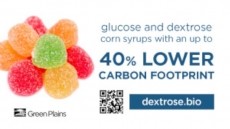Four big trends in chocolate for 2017: Cargill identifies growth drivers

However, the company pointed out the overall chocolate confectionery market is facing a “challenging environment,” with margins declining, due to stagnating demand in Europe and in export markets.
Confectionery manufacturers are particularly exposed to high cocoa bean prices, Niklas Andersson, marketing director of cocoa and chocolate at Cargill, said.
“It’s difficult to pass on price increases to customers, so margins are squeezed,” he said.
The chocolate industry also faces increased legislation and regulation due to the public debate around fat and sugar, Andersson added. In the UK, for example, there has been pressure to remove confectionery items from checkout lines in supermarkets.
Three pillars to help grow long-term sustainable business
Cargill has identified three pillars that might improve margins and help confectionery grow a long-term business, according to the report.
The three pillars include manage price risk, which means buying raw materials like cocoa, milk or sugar at the right time and the right price; and re-engineer products, reformulating to meet consumers’ needs and to reduce costs.
The third pillar is that confectioners need to adapt to consumer needs through “up-grading and innovating, either by premiumization or elevating product position in product marketing,” Andersson said.
“Going premium can stimulate demand for dark chocolate, origin label chocolate or bean variety with extended conching. Consumers are often prepared to pay extra for premium products.”
An example of innovating in product marketing is the promotion of existing features of a product, to promote health and wellness, effectively re-positioning the product, he added.
In addition to the four trends included in the report, Cargill predicted that personalization will be the future of the chocolate industry.
“Personalization is a trend observed in many industries but which has not been fully translated into chocolate confectionery yet,” the company said.
“However, pop up stores enabling consumers to design their own chocolate bars, for example, are becoming more common.”
Indulgent
Cargill said vegetable and chocolate combinations are becoming popular across a range of categories. Last year, Cadbury worked on an innovative kale crème to celebrate the centenary of its Milk Tray. Tony Chocoloney recently introduced a limited edition chocolate bar with white chocolate, carrot and walnut.
Cargill added that savory inspiration is going a step further in the indulgent chocolate space.
“[The savory trend] started some years ago with salted caramel and then we saw some more innovative flavors such as bacon associated with chocolate,” Andersson said.
Combining different flavors and textures in one bar is also becoming a common strategy for confectioners to create indulgent products.
For example, Milka Triple caramel flavor features different textures in the same chocolate bar. In 2016, Hershey also launched its Take5 bar in the US with five different layers with multiple flavors and textures.
1. Premium
Demand for premium chocolate is at all-time high, with provenance and origin being key among cocoa and chocolate products, Cargill said.
“Alongside the long lasting trend for single origin and Belgian chocolate, recently, manufacturers started to highlight the origin of other ingredients in chocolate confectionery, for example Himalayan salt,” Andersson said.
However, the growing inspiration from the artisan segment is also relatively new, Cargill added. The claims, such as “handmade” or “artisanal” are more and more observed and details on process appear on industrial chocolate, including stone-ground, slow churned, conching time.
In 2016, Nestlé brought an artisan chocolate range to supermarkets, Les Recettes de l’Atelier, highlighting the terroir and specificity of different cocoa origins.
Godiva also released its first single-origin chocolate bar collection this year.
2. Healthy
Besides the long standing trend for sugar reduction and gluten free, lactose free claims are increasingly being observed in cocoa and chocolate products, with milk alternatives such as coconut milk increasing in popularity, Cargill said.
“Looking at ingredients seen as beneficial, the trend for protein is still booming and becoming mainstream, breaking free from the sports nutrition niche and focusing on satiety rather than sports recovery,” the company added.
To tap the health trend in the chocolate space, Nestlé reduced the amount of sugar in their products by 32% between 2000 and 2013. It is also planning to cut sodium in its foods and beverages, aiming to meet the World Health Organization's suggested diet.
Mars also introduced Mars and Snickers protein bars in April 2016 in the UK.
Sustainable and clean
Certified chocolate is now spreading to new countries and categories, because where food comes from, how it is produced, and its true ethical and environmental cost really matter to today’s consumer, according to Cargill.
Ferrero announced in July that it will double its Fairtrade-sourced cocoa over the next three years. Meanwhile, Tesco is making all its own-label chocolate Rainforest Alliance certified by the end of 2018.
Andersson added that the clean and clear label trend has also never been stronger. For example, Mars announced in February that they will phase out artificial colors in all sweets and chocolate over the next five years, and Nestlé uses concentrated fruit and vegetable colors in its Smarties.
“People are increasingly looking for real ingredients. Use of plant extracts or fruits and vegetables to naturally color products is booming,” he said.






















